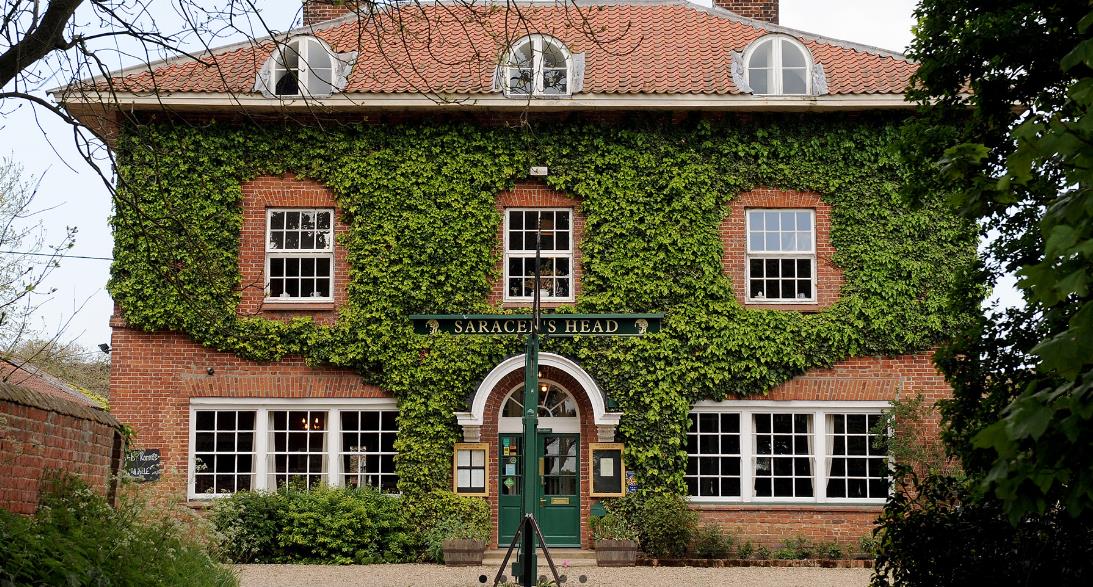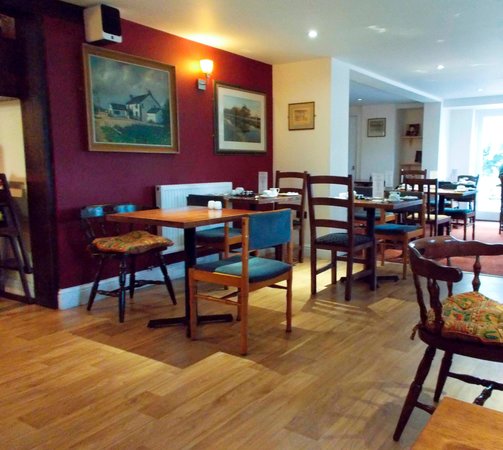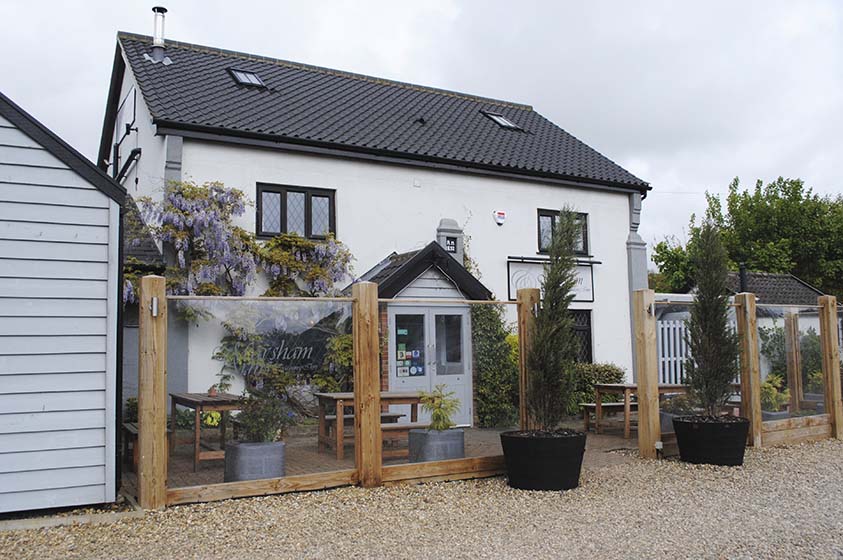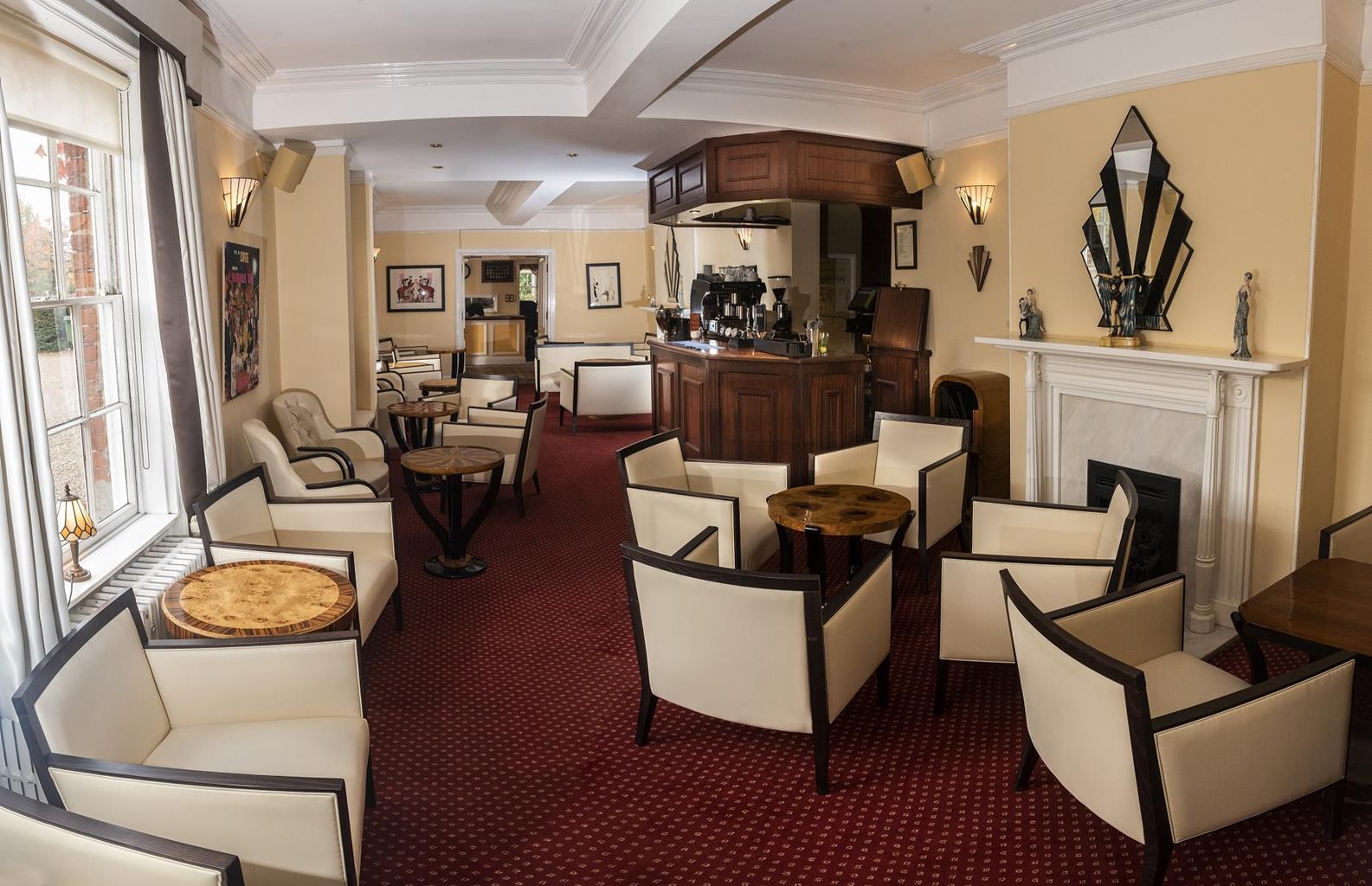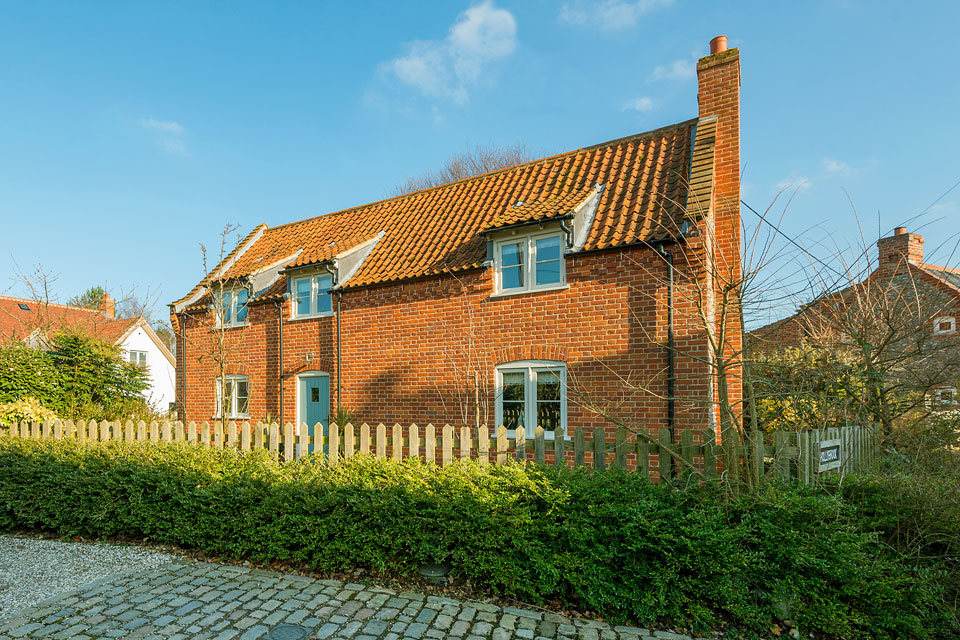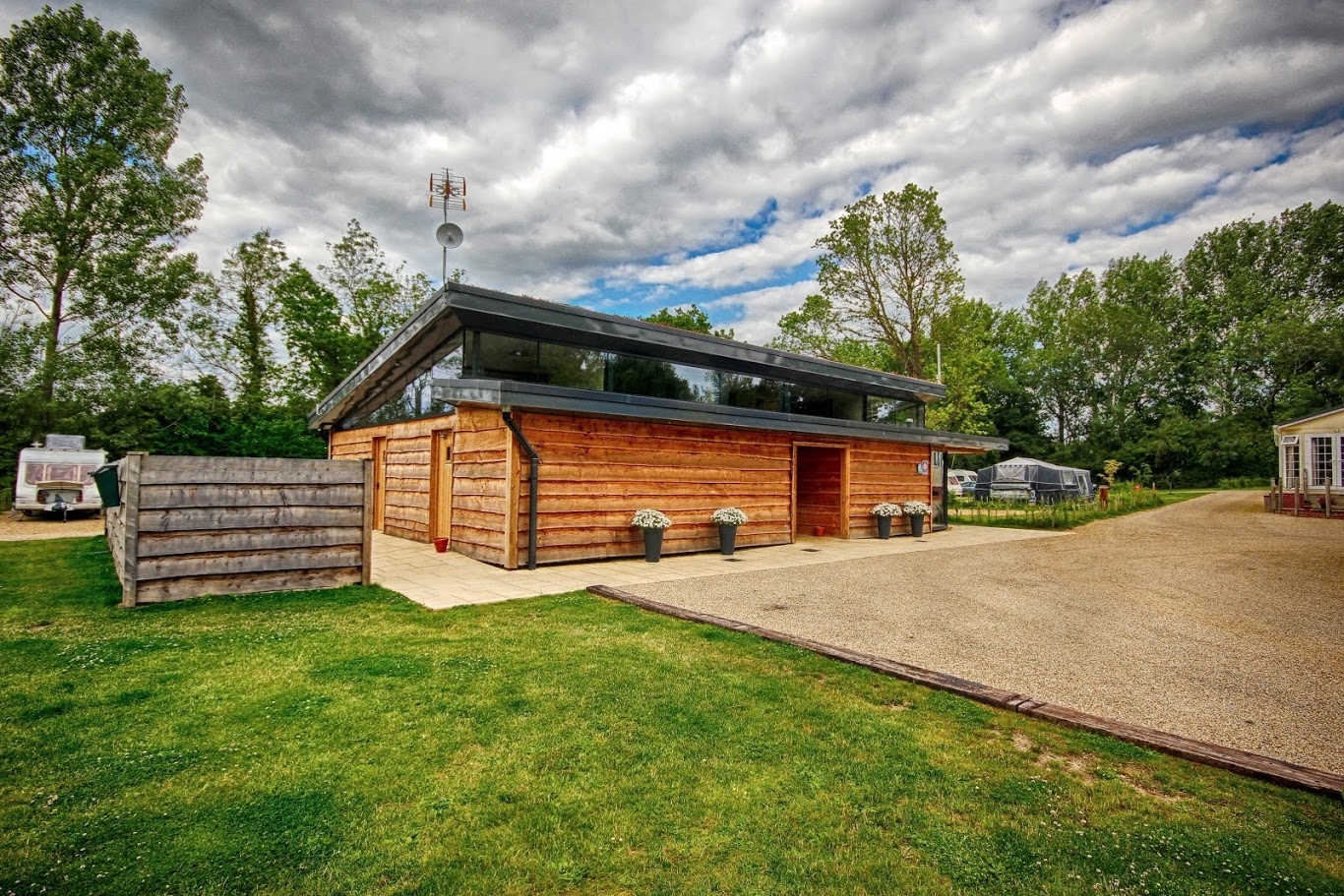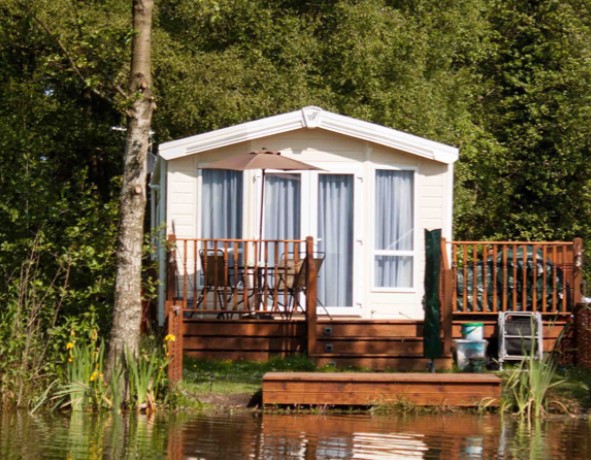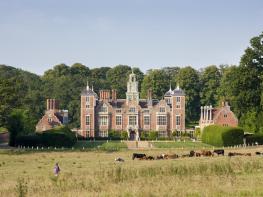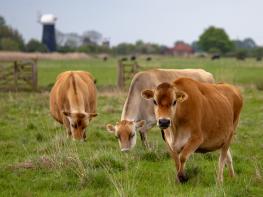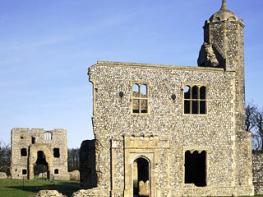The Coach House is perfectly situated between historic Norwich and the stunning North Norfolk…
Aylsham and The Bure Valley Railway

6 miles (9.7kms)
About the walk
Although sat upon a Roman road, the first recorded settlement at Aylsham was established by Aegel, a Saxon, by whose anglicised name it is still known today. It developed as a successful market town and centre for weaving, its linen, known as Aylsham Webb being of such quality that it was favoured by the 14th-century kings of England.
With the rise of the East Anglian wool market, production shifted to worsted cloth, but the industry declined during the 18th century with the advent of the Industrial Revolution. The area lacked the resources of fast-flowing water and coal found in the Midlands and North, which were needed to power the developing factory system.
Nevertheless, the town remained a centre for local trade, boosted towards the end of the 18th century when the River Bure was made navigable. Wherries could then carry out timber and farm produce to the seaport at Great Yarmouth, returning with coal and other commodities. Before the railway arrived, Aylsham was also an important stage on the mail coach route between Cromer and Norwich, the drivers changing horses at the famous Black Boys Hotel while passengers seized the brief opportunity to seek warmth and refreshment.
Oddly, the town was once part of the Duchy of Lancaster, the manor being held from 1372 by John of Gaunt, the 1st Duke of Lancaster. It remained a Crown property until the 17th century when Charles I, in need of ready cash, pawned it to the City of London. Charles subsequently lost his head and the pledge was never redeemed, but the City eventually got their money back by selling it on to the Earl of Buckinghamshire who held Blickling, just up the road.
The Bure Valley Railway
Much of the walk is beside the Bure Valley Railway, a narrow gauge heritage line that runs between Aylsham and Wroxham. Extending over 9 miles (14km), with three intermediate stations, it follows the course of a branch of the former East Norfolk Railway, which connected Aylsham to the main Norwich-Cromer line at Wroxham. The original passenger service to Aylsham ended in 1952, although the line didn't finally close until 1981. Yet within nine years, trains were running once again, hauled by both steam and diesel.
A major development was the replacement of a level crossing over the A140 trunk road outside the town with a short tunnel; sedate narrow gauge railways are just not compatible with high volumes of fast moving traffic. Although the original line was built only single track, the narrow gauge replacement left sufficient room for a foot and cycle path, so don't be surprised if the final stage of the walk is interrupted by the hoot of a passing train.
Walk directions
From Station Road car park, walk left up to the main road. Turn left again past a mini-roundabout then cross to a gate that begins the Marriott's Way leisure trail. Emerging from a cutting, keep ahead over a crossing street, but leave 100yds (91m) beyond, dropping left down the embankment to the main road.
Cross to a gap in the hedge opposite and walk away at the field edge. Over a stile, bear right across a second field. Emerging onto the edge of rough meadow, turn out right onto a narrow lane. Follow that left for 0.75 mile (1.2km), passing Stonegate Farm and later swinging around a sharp, left bend.
Some 100yds (91m) beyond the bend, turn off beneath an oak tree on the right. A sign points across the field towards Marsham. Beyond a stile at the far side, a path delves through a tangled wood and over a bridge spanning The Mermaid. Emerging at the edge of another field, bear right along the margin of cultivation for 50yds (46m) to a waypost. Climb left across the field. Through a gap at the top of the hill, continue forward with a hedge on your left, later joining a track that leads out to a lane. Follow it right through Marsham to the main road by The Plough Inn.
Turn right on a street beside the main road to a junction. Go left, crossing the A140 to a track opposite. At Rodgate Farm, keep ahead beside poultry barns. Over a stile at the far end, continue forward across grazing meadows, where occasional white-topped posts confirm the line of the path. Eventually drawing close with the right-hand hedge, carry on at the edge of successive meadows before emerging onto a road.
Follow it left, but then leave just before a bridge across The Mermaid into a field on the right. Walk away by the left-hand boundary. Over a stile in the corner, continue beside the stream to a bridge.
Pass beneath the bridge and climb steps on the right to a path beside the Bure Valley Railway. Follow it right back across the bridge, later continuing with the track past a level crossing. Eventually the railway enters a short tunnel while the track rises to meet the A140. Cross the busy road to a gate opposite and carry on at the field edge. Beyond the tunnel, path and track again come together, shortly returning to the car park beside the station.
Additional information
<p>Field paths, lanes and tracks</p>
<p>Farmed countryside</p>
<p>Dogs under control and on lead near railway</p>
AA Walker's Map 21 North Norfolk Coast
<p>Shared council car park with Bure Valley Railway</p>
<p>In Aylsham behind the Town Hall off Red Lion Street</p>
WALKING IN SAFETY
Read our tips to look after yourself and the environment when following this walk.
Find out more
Also in the area
About the area
Discover Norfolk
The North Norfolk Coast is designated an Area of Outstanding Natural Beauty and probably the finest of its kind in Europe. Here you’ll find a string of quaint villages and small towns – Holkham, Wells-next-the-Sea and Cley next the Sea are 21st-century favourites, while Sheringham and Cromer are classic examples of a good old-fashioned seaside resort where grand Victorian hotels look out to sea. Further round the coast you'll find Great Yarmouth, one of the most popular resorts in the UK and packed full of amusements, shops and seashore entertainment. And let's not forget Norwich, the region's only city.
Norfolk prides itself on its wealth of historic houses, the most famous being Sandringham, where Her Majesty the Queen and her family spend Christmas. Many of Norfolk’s towns have a particular charm and a strong sense of community. The quiet market towns of Fakenham and Swaffham are prime examples, as well as Thetford, with its popular museum focusing on the TV comedy series Dad’s Army which was filmed in the area.
Nearby stays
Restaurants and Pubs
Nearby experiences
Recommended things to do
Why choose Rated Trips?
Your trusted guide to rated places across the UK
The best coverage
Discover more than 15,000 professionally rated places to stay, eat and visit from across the UK and Ireland.
Quality assured
Choose a place to stay safe in the knowledge that it has been expertly assessed by trained assessors.
Plan your next trip
Search by location or the type of place you're visiting to find your next ideal holiday experience.
Travel inspiration
Read our articles, city guides and recommended things to do for inspiration. We're here to help you explore the UK.

